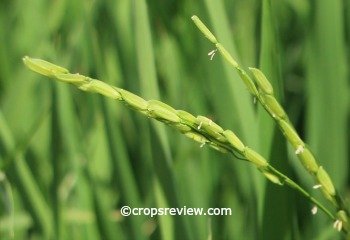C3 plants are those which fix and reduce inorganic CO2 into organic compounds using only the C3 pathway in photosynthesis while C4 and CAM plants employ both C3 and C4 cycles.
In other words, the first classification refers to those plants having C3 photosynthesis, C4 plants employ the C4 photosynthesis, and CAM plants the CAM photosynthesis.

Plants utilizing only the C3 cycle are most common in the Plant kingdom. They comprise about 85% of all plant species (Moore et al. 2003).
In contrast, only about 3% are C4 plants while about 8% were identified as CAM plants as of 2010 (Simpson 2010).
| FEATURE/ CHARACTERISTIC | C3 Plants | C4 Plants | CAM Plants |
| Distribution in the plant kingdom (% of plant species) | ~85% (Moore et al. 2003) | ~3% (Simpson 2010), all angiospermous including most troublesome weeds; mostly monocots (C4 grasses and sedges about 79% of all C4 plants) | ~8% (Simpson 2010), mostly succulent plants but not all succulents are CAM plants |
| Type of photosynthesis | C3 photosynthesis | C4 photosynthesis | CAM photosynthesis |
| CO2 fixation pathway | via C3 cycle only | via C3 and C4 cycles, spatially (C4 in the mesophyll cell then C3 in the bundle sheath cell) | via C3 and C4 cycles, both spatially (in different parts of the same cell) and temporally (C4 at night, C3 at day time) |
| Leaf anatomy | Large air spaces bordered by loosely arranged spongy mesophyll cells; mesophyll cells but not bundle sheath cells (BSC) contain chloroplasts | Generally, thinner leaves, closer arrangement of vascular bundles, smaller air spaces than C3; veins surrounded by thick-walled BSC further surrounded by thin-walled mesophyll cells (wreath-like arrangement of BSC is called Kranz anatomy); mesophyll cells and BSC contain chloroplasts, those of the BSC much larger | Thick and fleshy leaves, mesophyll cells having large, water-filled vacuoles |
| Stomatal movement | Stomata open in daytime, close at night | Stomata open in daytime, close at night | Inverted stomatal cycle (open at night, close in the day) |
| Typical Environmental / Geographical adaptation (where most common) | Temperate | Tropical or semi-tropical, high light intensity, high temperature, drought conditions | Desert or arid (xeric) habitats |
Examples of C3 plants
Most small-seeded cereal crops such as rice (Oryza sativa), wheat (Triticum spp.), barley (Hordeum vulgare), rye (Secale cereale), and oat (Avena sativa); soybean (Gycine max), peanut (Arachis hypogaea), cotton (Gossypium spp.), sugar beets (Beta vulgaris), tobacco (Nicotiana tabacum), spinach (Spinacea oleracea), potato (Solanum tuberosum); most trees and lawn grasses such as fescue and Kentucky bluegrass.
Also includes evergreen trees and shrubs of the tropics, subtropics, and the Mediterranean; temperate evergreen conifers like the Scotch pine (Pinus sylvestris); deciduous trees and shrubs of the temperate regions, e.g. European beech (Fagus sylvatica) (Moore et al. 2003), as well as weedy plants like the water hyacinth (Eichornia crassipes), lambsquarters (Chenopodium album), bindweed (Convolvolus arvensis), and wild oat (Avena fatua) (Llewellyn 2000).

Thank you for the knowledge shared